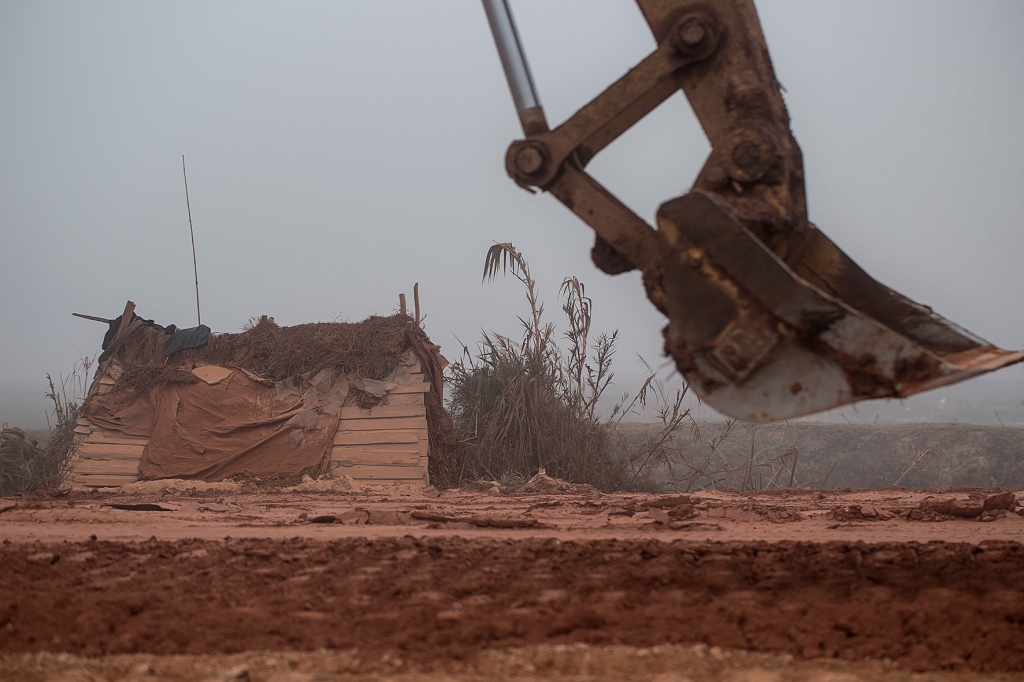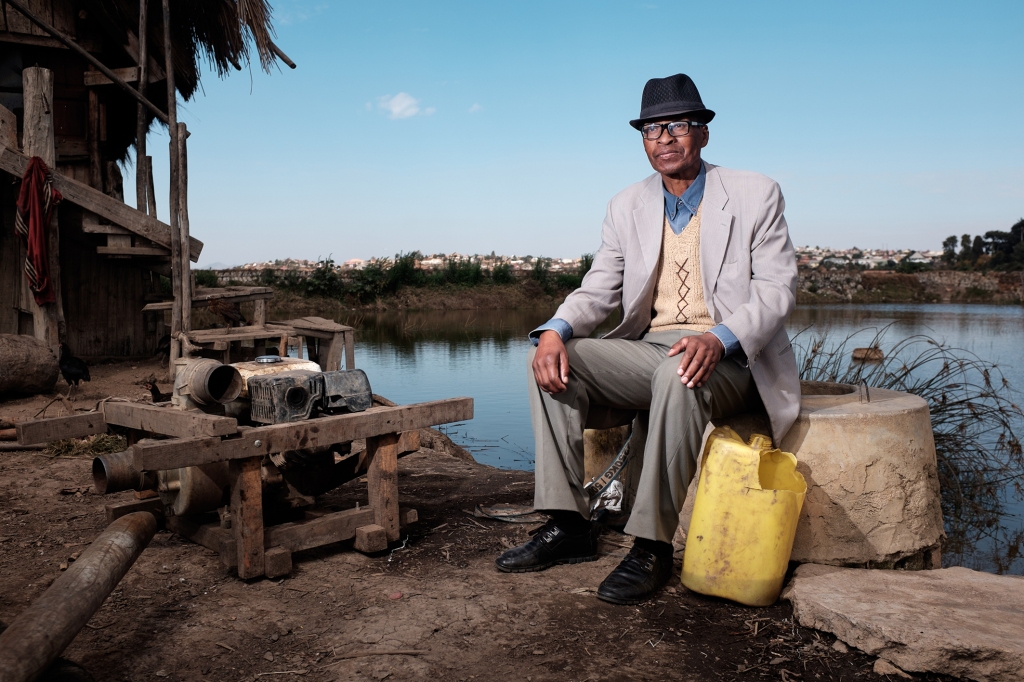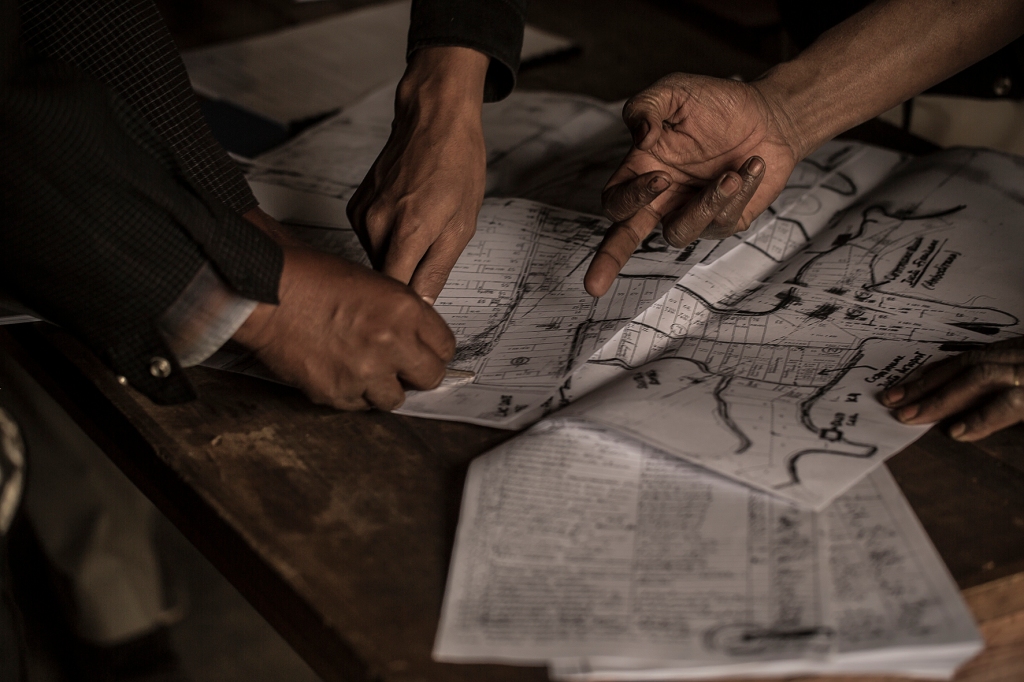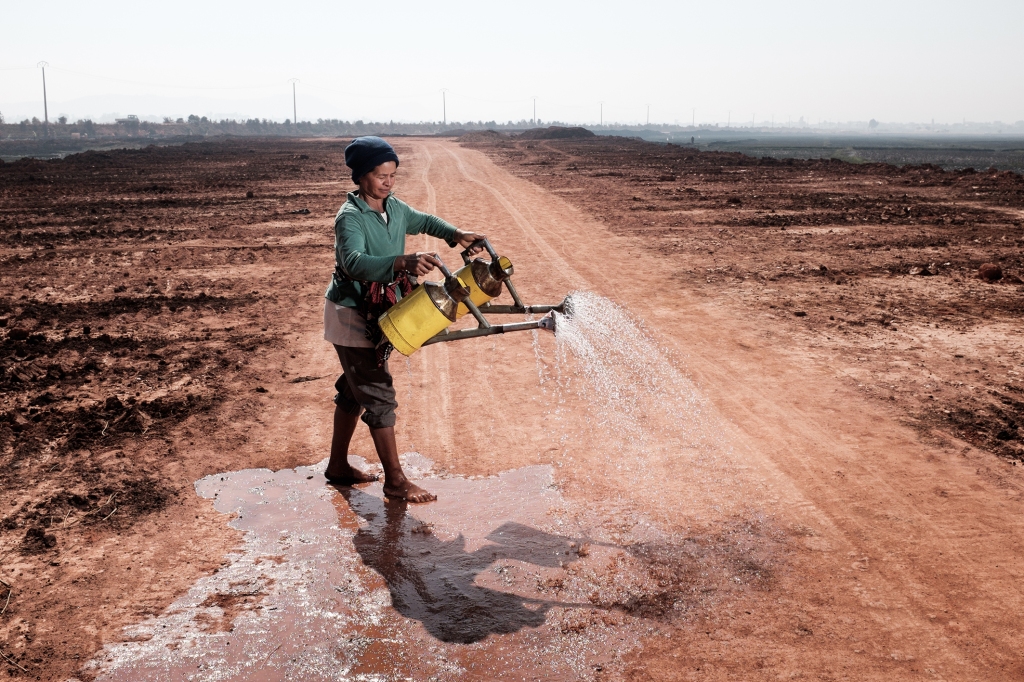en français
Antananarivo consists of 12 hills or sacred mountains. Its consecutive rulers have built them up, castles and villages. One king, Andrianampoinimerina, he was known for his wits and a foresight, unparalleled. He built an elaborate water drainage system channeling monsoon rains to which was then as is now the ‘Laniera Marshlands’.
 For Madame Lala and her family, the promise of a better future awaits to be fulfilled and remains in the hands of an unknown entity
For Madame Lala and her family, the promise of a better future awaits to be fulfilled and remains in the hands of an unknown entity
A marshland is an area of low-lying land which is flooded in wet seasons or high tides, and typically remains waterlogged at all times. The Laniera is no exception, it is the lowest point in the capital. It discretely saves millions from drowning every summer. Moreover, the eroded soil enriches the rice paddies and lagoons downstream which consequently give high quality sustenance and sustainability to the growing city.
 Heavy weight machinery round the clock passes a fisherman’s home.
Heavy weight machinery round the clock passes a fisherman’s home.
Our descent to Laniera was agreeable, but not for the car. The old road is battered day and night by passing heavy weight trucks preparing a parallel road. People seem unbothered. While sipping a sweet coffee on the vibrating bench, the coffeeshop owner and clients are glad a new road is under way. Progress is welcomed.
 Size does matter, the contractor’s fault is no child play. For the residents of Laniera every centimeter of land counts in grains of rice.
Size does matter, the contractor’s fault is no child play. For the residents of Laniera every centimeter of land counts in grains of rice.
The new road must be delivered by November, so haste is mandatory and thus mistakes are not uncommon. One is hard to conceal, a barren stretch of land 250 x 60 meters across burdens its luscious surroundings. « I gave two thirds of my land for the road to pass » says Mrs. Noro « Once my rice paddies were buried underneath two meters of rubble, they decided to abandon the stretch in order to start another ». In addition, the road has buried the channels which irrigate the terrain.
 Mr. Jean Pierre, ex-land owner
Mr. Jean Pierre, ex-land owner
Little did these people know that generously donating their land today meant losing their rights and livelihood tomorrow. Nevertheless, one person’s misfortune is another person’s happiness. The Prezidan Fokontany (quarter chef) sees in it an opportunity to grow, perhaps to create a new bureau or shops to sell local products (fish, shrimps, rice, vegetables…).
 The customary law in Madagascar has many loopholes which the strong can abuse.
The customary law in Madagascar has many loopholes which the strong can abuse.
Ambitions aside, land owners naturally rejoiced the new road, until they learnt that what they owned had already been sold. « 3 years ago, by the time we woke up, everything we own vanished » says Mr. Jean Pierre « my family have been cultivating this land for more than 50 years. The land is ours lawfully, so why did they sell it? ». The road itself is not a problem, the problem is solving the mystery of who sold the land to who! « Plots measuring 10 hectares each were sold all along the road by an unknown entity to a stranger » asserts Mr. Rakotoainosy.
 Madame Noro as she waters the rubble that took over her land.
Madame Noro as she waters the rubble that took over her land.
In a country where livelihood is based on agriculture, fisheries and livestock, planned land grabbing, short sighted environmental destruction and hasty tread on national heritage ought be brought to public examination. The tribunal refuses to release the names of neither sellers nor buyers, nor who has authorised the land sale deals. The construction contractor still hasn’t admitted any errors and the likes of Mrs. Noro might never plant that land again.
 Who’s Ownable
Who’s Ownable
The fresh tarmac will be inaugurated soon, a handful will go back home richer, the rest will have none. At a time when freedom means free to be sold, the question is: Who owns our future?
Anatananarivo, Madagascar 2016 ©
{ A collaborative work and message –
Safidy Andrianantanaina }
READ NEXT ARTICLE LIRE L’ARTICLE SUIVANT
MORE GALLERIES FOR YOU













